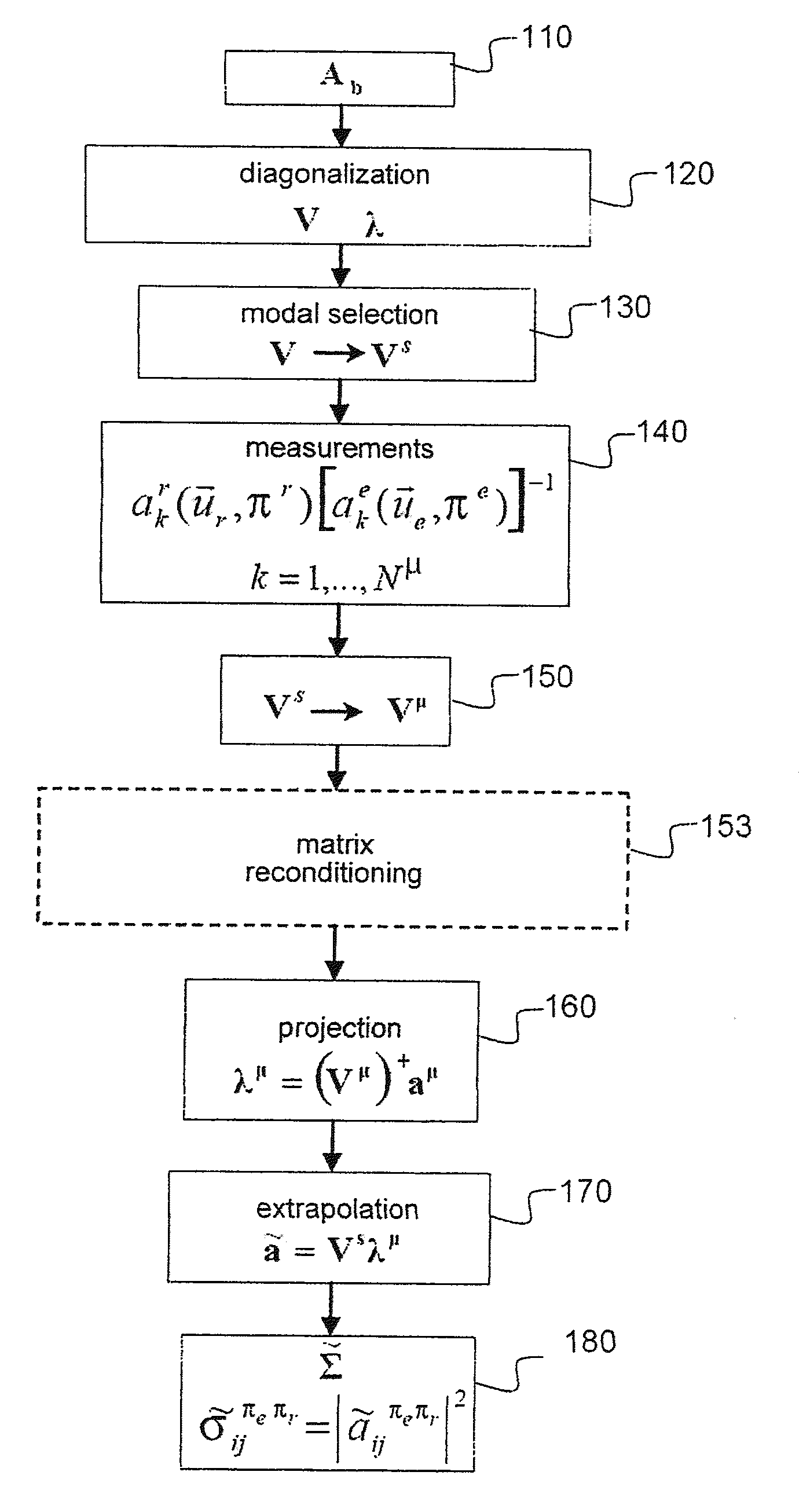Method for estimating a radar cross-section
a radar cross-section and cross-section technology, applied in the field of radar signature, can solve the problems of increasing the cost of building an anechoic chamber for objects of large sizes, increasing the cost of measurement, and increasing the difficulty of obtaining the rcs by measuremen
- Summary
- Abstract
- Description
- Claims
- Application Information
AI Technical Summary
Benefits of technology
Problems solved by technology
Method used
Image
Examples
Embodiment Construction
[0055]A target will be considered subsequently, for which it is desired to estimate the monostatic or bistatic RCS, preferentially but not exclusively, at low frequency, in the sense as defined above.
[0056]Generally, for a given frequency f, the description of the bistatic RCS of the target may be expressed as a matrix with a size 2N×2N:
Σb=(σ11HHσ12HH…σ1NHHσ11HVσ12HV…σ1NHVσ21HHσ22HH…σ2NHHσ21HVσ22HV…σ2NHV⋮⋮⋱⋮⋮⋮⋱⋮σN1HHσN2HH…σNNHHσN1HVσN2HV…σNNHVσ11VHσ12VH…σ1NVHσ11VVσ12VV…σ1NVVσ21VHσ22VH…σ2NVHσ21VVσ22VV…σ2NVV⋮⋮⋱⋮⋮⋮⋱⋮σN1VHσN2VH…σNNVHσN1VVσN2VV…σNNVV)(3)
[0057]wherein each element σijπeπr is the value of the observed RCS for an incident wave of direction {right arrow over (u)}ie, of polarization πe=H or V and for a receiving direction {right arrow over (u)}jr with polarization πr=H or V. The directions {right arrow over (u)}ie and {right arrow over (u)}jr, i, j=1, . . . , N are advantageously but not necessarily equidistributed within the solid angle 4π. For example, these directions may ...
PUM
 Login to View More
Login to View More Abstract
Description
Claims
Application Information
 Login to View More
Login to View More - R&D
- Intellectual Property
- Life Sciences
- Materials
- Tech Scout
- Unparalleled Data Quality
- Higher Quality Content
- 60% Fewer Hallucinations
Browse by: Latest US Patents, China's latest patents, Technical Efficacy Thesaurus, Application Domain, Technology Topic, Popular Technical Reports.
© 2025 PatSnap. All rights reserved.Legal|Privacy policy|Modern Slavery Act Transparency Statement|Sitemap|About US| Contact US: help@patsnap.com



